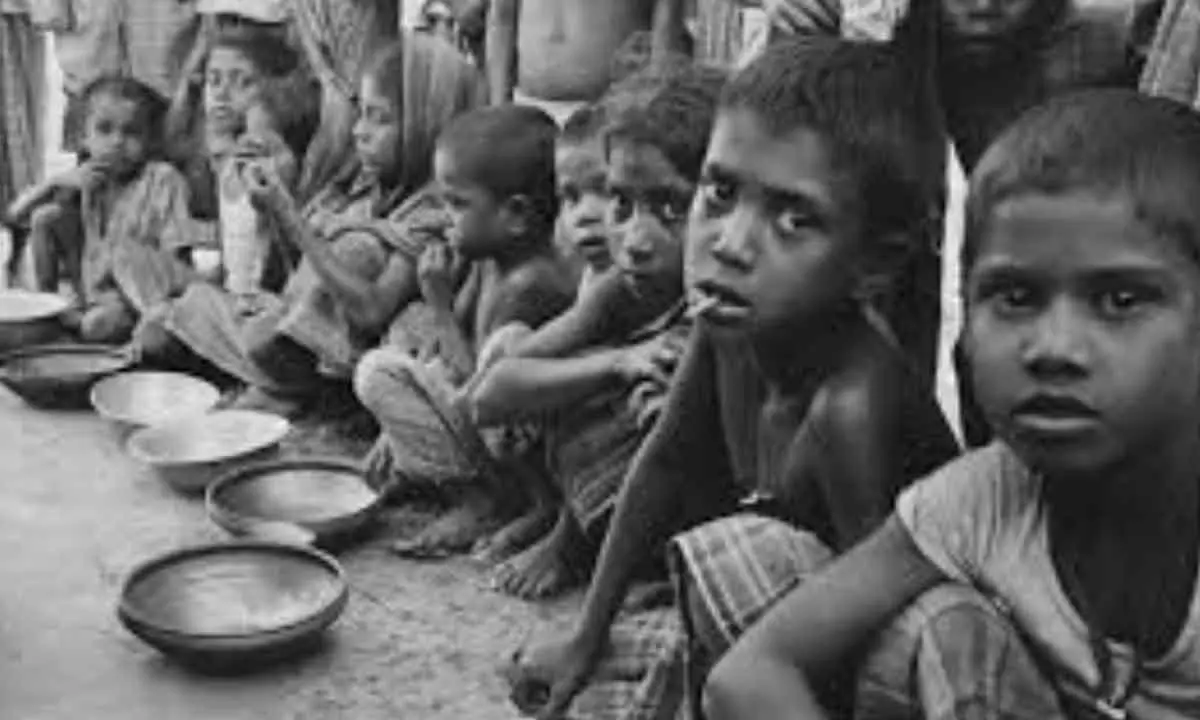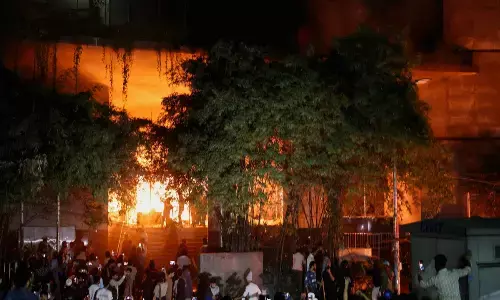Global Multidimensional Poverty Index 2023: Unstacking the global poverty

25 Countries Halved Multidimensional Poverty Within 15 Years, but 1.1 Billion Remain Poor
Across 110 countries, 1.1 billion of 6.1 billion people are poor. Understanding where poor people live is crucial for policymaking. To end poverty in all its forms, the interlinked deprivations that poor people experience need to be addressed to reduce the intensity of poverty and thereby empower poor people to exit poverty. Recall that people living in multidimensional poverty ordinarily experience multiple deprivations simultaneously. Breaking the global MPI down by indicator reveals which overlapping deprivations are the most widespread. Across 110 countries 824–991 million of the 1.1 billion poor people lack adequate sanitation, housing or cooking fuel
The Global Multidimensional Poverty Index 2023 was released by the United Nations Development Programme (UNDP) and the Oxford Poverty and Human Development Initiative. According to the report, 415 million people came out of poverty in India within 15 years between the years 2005-2006 and 2019-2021, with incidence falling from 55.1 per cent in 2005-2006 to 16.4 per cent in 2019-2021.
The report finding shows that 25 countries, including India, successfully halved their global Multidimensional Poverty Index (MPI) values within 15 years, which shows that rapid progress is possible. These countries include Cambodia, China, Congo, Honduras, India, Indonesia, Morocco, Serbia, and Vietnam.
In 2015, the 2030 Agenda for Sustainable Development and Sustainable Development Goal (SDG) 1 set out to overcome the greatest global challenge: ending poverty in all its forms. At the midpoint to 2030, people’s lives continue to be battered in multiple ways simultaneously. Globally, an array of challenges impedes poverty reduction— widespread inequality, political instability and conflict, a climate emergency, COVID-19 pandemic recovery, and cost of living and other crises. There are both commonalities and specifics that cloud the way for each country.
The global MPI is the only counting-based index that measures overlapping deprivations for more than 100 countries and 1,200 sub-national regions and offers a key perspective on SDG 1, while encompassing indicators related to other SDGs. The global MPI can be pictured as a stack of blocks, each of which represents a deprivation of a poor person. The goal is to eliminate deprivations so the height of the stack declines.
This report presents a compact update on the state of multidimensional poverty in the world. It compiles data from 110 developing countries covering 6.1 billion people, accounting for 92 per cent of the population in developing countries. It tells an important and persistent story about how prevalent poverty is in the world and provides insights into the lives of poor people, their deprivations and how intense their poverty is— to inform and accelerate efforts to end poverty in all its forms. As still only a few countries have data from after the COVID-19 pandemic, the report urgently calls for updated multidimensional poverty data. And while providing a sobering annual stock take of global poverty, the report also highlights examples of success in every region.
Across 110 countries, 1.1 billion of 6.1 billion people are poor. Understanding where poor people live is crucial for policymaking. Roughly five out of six poor people live in Sub-Saharan Africa or South Asia: 534 million (47.8 per cent) in Sub-Saharan Africa and 389 million (34.9 per cent) in South Asia. Some 65 per cent of the remaining poor people live in just five countries: China (2014), Indonesia (2017), Myanmar (2015-16), Sudan (2014) and Yemen (2013).
Disaggregating poverty data by sub-national region, age group and rural-urban area illuminates striking inequalities within countries and reveals what groups are being left behind.
Over half (566 million) of the 1.1 billion poor people are children under age 18. Some 54.1 per cent of poor children live in Sub-Saharan Africa, making poverty reduction for these 306 million children a vital focus for the region. South Asia is home to 177 million poor children, or 31 per cent of poor children. Across 110 countries 27.7 per cent of children are poor, compared with 13.4 per cent of adults. This situation calls for unflagging engagement in reducing child poverty.
Almost 84 per cent of poor people live in rural areas, and rural poverty dominates in every world region. Rural-urban disparities are glaring in South Asia, where nearly 340 million (87.5 per cent) poor people live in rural areas, compared with 49 million (12.5 per cent) in urban areas. While urban poverty is serious and household surveys may need to do better at capturing it, most poor people live in rural areas.
To end poverty in all its forms, the interlinked deprivations that poor people experience need to be addressed to reduce the intensity of poverty and thereby empower poor people to exit poverty. Recall that people living in multidimensional poverty ordinarily experience multiple deprivations simultaneously. Breaking the global MPI down by indicator reveals which overlapping deprivations are the most widespread. Across 110 countries 824–991 million of the 1.1 billion poor people lack adequate sanitation, housing or cooking fuel.
More than half of poor people are deprived in nutrition, electricity or years of schooling. The number of poor people deprived in nutrition is similar in South Asia and Sub-Saharan Africa (around 245 million). Almost 80 per cent of poor people who lack access to electricity—444 million—live in Sub-Saharan Africa and are being left behind in an increasingly digital world. In all regions except Europe and Central Asia, around half of poor people live in a household where no member has completed six years of schooling, making this a vexing cross-regional issue.
Multidimensional metrics complement monetary poverty metrics by measuring nonmonetary deprivations. Multidimensional poverty using the global MPI is often more widespread than extreme monetary poverty. In 42 of the 61 countries with data,8 the incidence of multidimensional poverty is higher than the incidence of extreme monetary poverty, measured by the World Bank at $2.15 a day. In Chad, Guinea and Mali the incidence of multidimensional poverty is 50 percentage points higher than that of monetary poverty, but in Malawi the incidence of monetary poverty is 20 percentage points higher than that of multidimensional poverty.
Special focus is needed on the poorest places and groups, many of which are in Sub-Saharan Africa. By using these data on MPI values, the proportion of poor people, the intensity of their poverty, the number of poor people and indicator composition, many actors can concentrate on the multiple deprivations that batter poor people’s lives—and reduce acute multidimensional poverty.




















